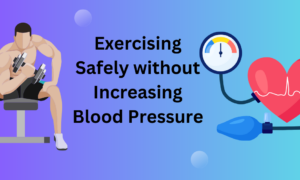Introduction to Different Fitness Goals
Achieving your fitness goals requires more than just hitting the gym and aimlessly going through the motions. To truly see results, you need to have a clear understanding of what you’re working towards and tailor your workouts accordingly. Whether you want to build strength, improve endurance, or increase flexibility, having a specialized workout plan can make all the difference in reaching your desired outcome.
In this blog post, we’ll delve into the world of fitness goals and explore how different training methods can help you achieve them. From pumping iron to pounding pavement and stretching it out on the mat, we’ve got you covered with expert advice and practical tips. So grab your water bottle, lace up those sneakers, and let’s dive into specialized workout plans for building strength, boosting endurance, and enhancing flexibility!
Understanding Strength Training
Strength training is a crucial component of any well-rounded fitness routine. It focuses on increasing your ability to exert force against resistance, leading to improvements in muscle strength, power, and overall physical performance.
To understand strength training better, it’s important to grasp the concept of progressive overload. This principle involves gradually increasing the demands placed on your muscles over time by adding weight or challenging exercises. By doing so, you continually push your body beyond its comfort zone and stimulate muscle growth.
Compound exercises are highly effective for building strength as they engage multiple muscle groups simultaneously. Some popular compound exercises include squats, deadlifts, bench presses, and pull-ups. These movements recruit a significant amount of muscle fibers and help develop functional strength that can be applied in various real-life situations.
Isolation exercises also play a role in strengthening specific muscles or addressing imbalances. For instance, bicep curls target the biceps while tricep extensions work the triceps. Including both compound and isolation exercises in your workout routine ensures comprehensive strength development.
In addition to focusing on exercise selection, proper form is essential when engaging in strength training. Performing each movement with correct technique not only maximizes results but also minimizes injury risk.
Remember that consistency is key when it comes to seeing progress in strength training. Aim for two to three sessions per week targeting different muscle groups each time for optimal gains.
Keep pushing yourself and challenging your limits throughout your journey towards greater strength!
Best Exercises for Building Strength
When it comes to building strength, there are a wide variety of exercises that can help you reach your goals. One of the most effective exercises for overall strength is the squat. This compound movement targets multiple muscle groups in the lower body, including the quadriceps, hamstrings, and glutes.
Another key exercise for building strength is the deadlift. This powerful movement primarily works your posterior chain muscles, such as your back, glutes, and hamstrings. Deadlifts not only improve overall strength but also help develop better posture and stability.
If you’re looking to strengthen your upper body, incorporating bench presses into your routine is essential. This exercise targets several muscles in the chest and arms while also engaging stabilizing muscles in the shoulders.
To build core strength and stability, planks are an excellent choice. Planks engage all major core muscles without putting excessive strain on other parts of your body.
Don’t forget about pull-ups or chin-ups if you want to develop strong back and arm muscles. These challenging exercises require significant upper body strength but offer great rewards in terms of overall muscular development.
By incorporating these exercises into your workout routine with proper form and gradually increasing resistance over time, you’ll be well on your way to building impressive strength levels. Remember to always consult with a fitness professional before starting any new exercise program!
Sample Strength Workout Plan

If you’re looking to build strength, it’s important to have a well-designed workout plan that targets your muscles effectively. Here is a sample strength workout plan that can help you achieve your fitness goals.
Start with a dynamic warm-up to prepare your body for the intense exercises ahead. This can include movements like jogging in place, arm circles, and leg swings.
Next, focus on compound exercises that work multiple muscle groups simultaneously. These exercises are highly efficient and effective for building overall strength. Examples of compound exercises include squats, deadlifts, bench presses, and overhead presses.
After completing the compound exercises, move on to isolation exercises that target specific muscles. Some examples include bicep curls, tricep dips or pushdowns (for arms), lunges or step-ups (for legs), and lateral raises (for shoulders).
To promote muscle growth and recovery after each workout session, incorporate rest days into your routine. This allows your muscles time to repair and adapt to the stress placed upon them during exercise.
Remember to gradually increase the weight or resistance as you get stronger over time. Progressive overload is key in stimulating muscle growth.
Don’t forget about proper nutrition! Fueling your body with adequate protein and nutrients will support muscle development and aid in recovery.
By following this sample strength workout plan consistently along with good nutrition practices; you’ll be well on your way towards achieving your desired level of strength!
Endurance Training Explained
Endurance training is an essential component of any well-rounded fitness routine. It focuses on improving your body’s ability to sustain physical activity over a prolonged period. Unlike strength training, which emphasizes short bursts of intense effort, endurance training involves longer duration activities at a moderate intensity.
To understand endurance training better, it’s important to grasp the concept of aerobic exercise. Aerobic exercise refers to activities that increase your heart rate and breathing for an extended period. These exercises are vital for building cardiovascular stamina and improving overall endurance.
Some popular forms of endurance training include running, cycling, swimming, and rowing. These activities help strengthen your heart and lungs while also working multiple muscle groups throughout your body.
When designing an endurance workout plan, it’s crucial to consider your current fitness level and goals. Beginners may start with shorter workouts at a lower intensity and gradually build up their duration and intensity as they progress.
Intermediate trainers can incorporate interval training into their routine by alternating between periods of high-intensity effort and active recovery periods. This method helps improve both cardiovascular capacity and muscular endurance.
Advanced athletes can challenge themselves with longer workouts at higher intensities or participate in events such as marathons or triathlons to further enhance their endurance capabilities.
Remember that consistency is key when it comes to achieving optimal results from endurance training. Aim for at least three sessions per week but listen to your body’s needs as rest days are equally important for recovery.
Incorporating cross-training activities like strength or flexibility exercises alongside your regular cardio routines can also contribute positively towards enhancing overall performance in endurance sports.
So whether you’re looking to prepare for a long-distance race or simply want more energy for everyday tasks, incorporating regular bouts of endurance training into your fitness regimen will undoubtedly help you reach new heights on the road to success!
Top Endurance Workouts for Different Levels
Endurance training is a crucial aspect of any fitness routine, as it helps improve cardiovascular health and stamina. Whether you’re a beginner or an advanced athlete, there are various endurance workouts that can be tailored to your fitness level.
For beginners, starting with low-impact exercises like walking or cycling is a great way to build endurance gradually. Aim for at least 30 minutes of continuous exercise at a moderate intensity, three to five times per week. As you progress, you can increase the duration and intensity of your workouts.
Intermediate athletes can incorporate interval training into their routines. This involves alternating between periods of high-intensity exercise and active recovery. For example, you could sprint for 30 seconds followed by one minute of jogging, repeating this cycle for a total of 20 minutes.
Advanced athletes may want to try more challenging forms of cardio such as HIIT (high-intensity interval training) or circuit training. These workouts involve short bursts of intense activity followed by brief rest periods. They help improve both aerobic and anaerobic endurance levels.
Cross-training activities like swimming or rowing are also excellent options for building overall endurance while providing variety in your workout routine.
Remember to always listen to your body and adjust the intensity based on how you feel during each workout session. Consistency is key when it comes to improving endurance levels over time!
Flexibility and Why It Matters
Flexibility is often overlooked when it comes to fitness goals, but it plays a crucial role in overall physical well-being. Having good flexibility can enhance your performance in other areas of fitness, prevent injuries, and improve your posture.
One key benefit of being flexible is the increased range of motion it provides. When your muscles are tight and inflexible, they limit your ability to move freely. This can affect everything from simple daily activities to more complex athletic movements. By improving flexibility, you can increase your range of motion and perform exercises with proper form.
Another advantage of flexibility training is injury prevention. Tight muscles are prone to strains and tears, especially during physical activity or sudden movements. Incorporating stretching exercises into your routine helps lengthen the muscles and reduce the risk of injury.
Flexibility also contributes to better posture. Poor posture can lead to muscle imbalances and pain in various parts of the body. Stretching regularly can help correct these imbalances by elongating tight muscles that pull on our skeletal structure.
Incorporating stretching into your workout routine doesn’t have to be time-consuming or complicated. Simple stretches like toe touches, shoulder rolls, or hip openers can make a significant difference in increasing flexibility over time.
To improve flexibility effectively, consistency is key. Aim for at least three days a week dedicated solely to stretching exercises targeting different muscle groups throughout the body.
Remember that everyone’s level of flexibility varies; therefore, progress may differ among individuals based on factors such as age and genetics. Be patient with yourself as you work towards achieving greater mobility through regular stretching sessions.
So don’t underestimate the importance of incorporating flexibility training into your fitness regimen! Whether you’re an athlete looking for improved performance or someone seeking better overall health and wellness – prioritizing flexibility will yield numerous benefits for both mind and body alike!
Incorporating Stretching into Your Routine
Stretching is often overlooked in fitness routines, but it plays a crucial role in overall flexibility and injury prevention. Whether you’re an athlete or just starting your fitness journey, adding stretching exercises to your routine can yield significant benefits.
When it comes to stretching, there are different techniques you can incorporate into your workout. Static stretching involves holding a stretch for 15-30 seconds, targeting specific muscle groups. Dynamic stretching involves moving through a range of motion with controlled movements.
Before starting any exercise, warm up with dynamic stretches like arm circles and leg swings. These help increase blood flow to the muscles and prepare them for the upcoming activity. After your workout or on rest days, focus on static stretches that target the major muscle groups in your body.
Apart from increasing flexibility, regular stretching also helps improve posture and balance. It reduces muscle tension and promotes relaxation after intense workouts or long periods of sitting.
To ensure you get the most out of your stretching routine, remember to breathe deeply while holding each stretch. This allows more oxygen to reach the stretched muscles and enhances the stretch’s effectiveness.
Adding just 10 minutes of stretching before or after an exercise session can make a significant difference in how you feel both during and after your workouts. So why not give it a try? Incorporate some simple stretches into your routine today!
Recommended Workout Plan for Improving Flexibility

Flexibility is an essential component of overall fitness. It not only helps improve performance in various physical activities but also reduces the risk of injury. If you’re looking to enhance your flexibility, incorporating specific stretching exercises into your routine is key.
Start by dedicating at least 10 minutes before and after your regular workout for stretching. Dynamic stretches such as leg swings, arm circles, and hip rotations are great for warming up the muscles and preparing them for more intense movements.
To target different muscle groups and increase flexibility, try incorporating static stretches into your routine. These stretches involve holding a position without movement for about 30 seconds. Some effective static stretches include seated forward bend, standing quad stretch, and butterfly stretch.
Additionally, consider adding yoga or Pilates classes to your weekly schedule. Both practices focus on improving flexibility through a combination of stretching exercises and controlled movements.
Remember to listen to your body during each stretch session. Do not push yourself beyond what feels comfortable to avoid injuries or overstretching.
By following a consistent workout plan that emphasizes flexibility training, you’ll gradually notice improvements in range of motion and overall mobility. So make sure to give equal attention to developing strength, endurance, AND flexibility – it’s all part of achieving a well-rounded fitness journey!
Conclusion
In this article, we have explored specialized workout plans for different fitness goals, including strength, endurance, and flexibility. Each of these goals requires a unique approach to training in order to achieve optimal results.
Strength training is essential for building muscle mass and increasing overall strength. Incorporating exercises such as squats, deadlifts, and bench presses into your routine can help you develop strong muscles and improve your physical performance.
For those looking to improve their endurance levels, various workouts can be incorporated into their training plan. Whether you’re a beginner or an advanced athlete, activities like running, cycling, swimming, or high-intensity interval training (HIIT) can help boost your cardiovascular fitness and stamina.
Flexibility should not be overlooked when it comes to overall fitness. Stretching exercises are crucial for maintaining joint mobility and preventing injuries. By incorporating activities like yoga or Pilates into your routine along with dedicated stretching sessions before and after workouts, you can enhance your flexibility over time.
Remember that achieving specific fitness goals requires consistency and dedication. It’s important to find a workout plan that suits your individual needs and preferences while also considering any existing medical conditions or limitations you may have.
Consulting with a professional trainer or coach can provide valuable guidance tailored specifically to your goals. They will ensure that your workouts are safe and effective while helping you stay motivated on the journey towards reaching optimal health and wellness.
So go ahead—set your fitness goals high! With the right workout plan designed for strength-building, endurance improvement, or flexibility enhancement—and by staying committed—you’ll soon be well on your way to achieving the healthy body you desire!





















